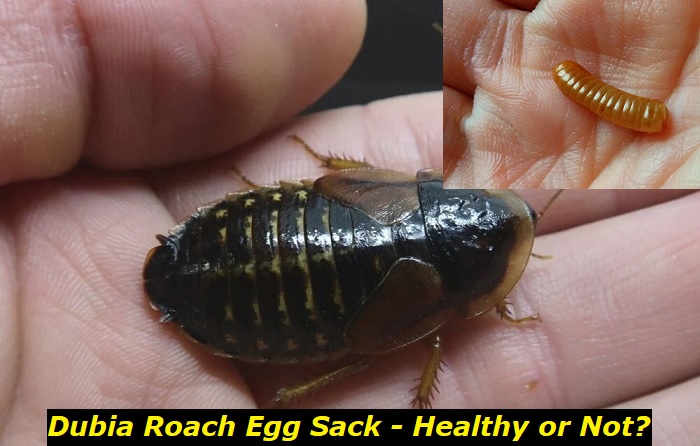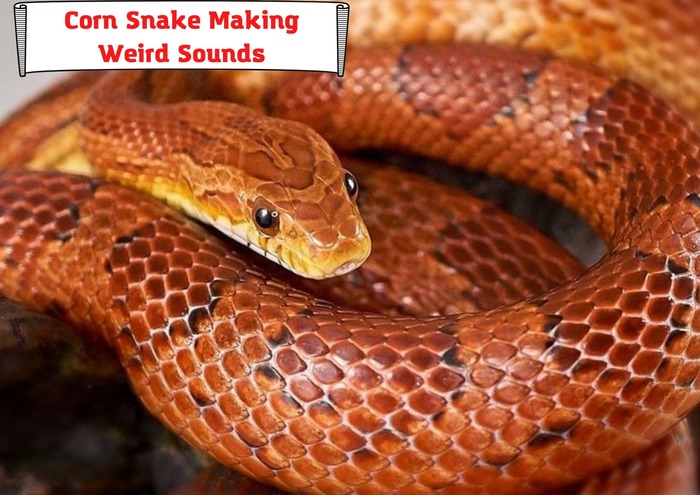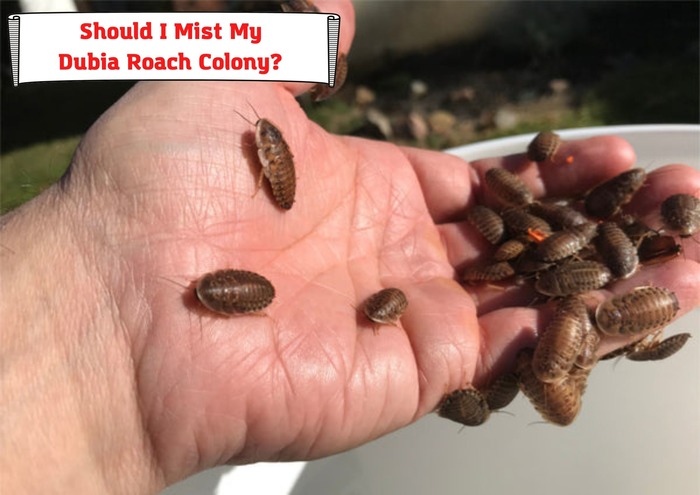It is common knowledge that many cockroach species lay eggs. However, dubia roach reproduction involves a natural incubation process where the female dubia roach keeps live nymphs in an egg sack called the ootheca. It is important to note that dubia roaches are among the roach species that give birth to live young ones instead of laying eggs.
But how do you know if the egg sack of your pregnant dubia roach is healthy?
Here is the article to help you understand how to tell if a dubia roach’s egg sack is healthy.

Dubia Roach Egg Sack
A female dubia roach’s egg sack is one of the fascinating wonders of the animal kingdom. Although the dubia roach carries an egg sack, it is interesting to note that it gives birth to its young ones alive. There is more to dubia roach reproduction than meets the eye.
Dubia roaches are ovoviviparous; they give birth to their young ones alive even though their reproductive systems feature an egg sack called ootheca.
The egg sack is often around 0.8cm long. It is usually dark red and sometimes white, especially when fresh.
The female dubia roach usually houses the baby roaches in her egg sack/casing during pregnancy. The sack is a multi-celled capsule-like structure that the female usually carries around in her backside and will only release intermittently to dry.
She will finally release the egg sack a few hours before the live baby roaches are ready to hatch. The cue to release the egg casing is usually the activities of the baby nymphs in the egg casing.
But sometimes, she can also release the egg sack in the event of an aborted pregnancy. The main reason for this is the stress resulting from unfavorable conditions such as humidity, temperature, and food shortage in the colony/enclosure.
How To Tell if the Egg Sack Is Healthy
So far, there is not much information about the internal workings of the egg sack or what goes on within the egg sack. But research has shown that the baby roaches’ growth is gradual, and their exoskeletons are usually white and softer than when they hatch.
So it is very difficult to tell if the egg sack is healthy. But the usual sign to know if the egg sack is healthy is that the female dubia roach keeps the egg sack tucked under her rear side. She may occasionally push it out for some time but will not expel and abandon it completely. She will usually draw it back in.
She mainly pushes out the ootheca every now and then to regulate the temperature. She will also often push the ootheca out to see if there is enough space for the nymphs to grow.
Sometimes, a female dubia roach will abandon her egg sac even though it is healthy. The main cause for this is unfavorable living conditions in the enclosure.
Usually, the major reasons for abortion in dubia roaches include food shortage, temperature imbalance, excessive handling by their owners, and an improper humidity level.
But this does not mean that the egg sack is unhealthy. She is just dumping a healthy egg sack because of the stress from improper living conditions or the other reasons above.
Another occurrence you may notice is that the dubia roach will drop its egg sack when the nymphs are ready to hatch. Ideally, when the nymphs begin to move and engage in activities in the egg casing, that is the cue to drop the egg capsule and let them hatch.
If she drops her egg sack and after an hour or two, the egg sack becomes brownish, that is a sign that the sack is unhealthy and the nymphs will not hatch.
Female dubia roaches, as mentioned earlier, usually hold their egg sacks until their nymphs are ready to hatch. When they expel the egg sack, the process from expelling the egg sack to the nymphs coming out of the eggs, their exoskeletons drying up, and their running around usually takes only a few minutes.
So if after about thirty minutes of dropping her red or white egg casing, there is no sign of white nymphs bursting out of the egg casing, and the egg casing begins to turn brown, you can get rid of it because that egg sack is unhealthy.
Can You Touch the Egg Casing to See if They Are Healthy?
Sometimes when you see the female dubia roach airing her ootheca, you may be tempted to touch the egg casing to find out if all is well. While this may seem like a good move from the perspective of a responsible and concerned breeder, it would only lead to unfavorable results.
Under no circumstance must you ever touch the egg casing if you find your female dubia roach airing it for a short while. If you do, the female dubia roach will likely abandon that egg casing because you have handled it.
When you see your female dubia roach airing her ootheca, that is a sure sign that the egg casing is healthy, and you can expect a fresh batch of dubia roaches in a short time, usually no later than 70 days.
But if you touch the egg sack, your female dubia roach will abandon the sack, and that will set you back about 30 days or more before she will be ready to breed again.
What Happens to a Healthy Egg Sack?
If you use dubia roaches as feeder insects, understanding what happens to healthy egg sacks can help you avoid costly mistakes and also help you maximize the gains of your dubia roach colony.
A female dubia roach will always carry her egg sack with her while the nymphs are developing in it. She may occasionally air it, but she will only drop it when the activity in the egg sack puts her on notice that the nymphs are about to hatch.
The gestation period is usually around 65 days. After she expels her ootheca, the nymphs will begin to come out of it in a few minutes. They will be white and will usually remain in the same place after they have made it out of the egg sack. This process may take a few hours.
But within this time, you will find that their white bodies will begin to turn from white to gray as the exposure to the air gradually hardens their exoskeletons.
You must allow this natural process to take place accordingly. You do not want to interfere either by handling the white nymph or trying to help them out of the ootheca. The main reason for this warning is that they are very delicate at this stage. Any attempt to handle them might cause severe injuries, which could have fatal consequences.
Also, the nymphs will leave the group to find an isolated place where they can molt. Molting for roaches is a process whereby the roach’s outer covering, which is also known as the exoskeleton, splits from the roach’s head to its thorax. This process is necessary because the exoskeleton of roaches does not grow.
Hence, the roach has to develop a new exoskeleton under the old one.
During the molting process, the roach will emerge from underneath its split old skin and appear with a new pale skin. It will also have soft appendages. After the molting stage, exposure to air will gradually harden the new exoskeleton, giving the roach its regular roach color.
This process can take up to 14 days, but this will depend on various factors such as diet and environmental parameters. Dubia roaches can molt up to7 times as they transition to full adulthood.
It usually takes about 24 hours for a freshly molted dubia roach to gain the regular roach color after molting. It will gradually change from white to dark brown over 24 hours.
Although they hatch as a group, the isolation helps them avoid damage during the shell hardening process, whether intentional or not.
If you come across a few nymphs isolated from the group after hatching, it would be best not to interfere with them. Allow the natural course of nature to run because handling them in their fragile state will only lead to damage.
Final Thoughts
It is pretty difficult to tell whether an egg sack is healthy by looking at it. You can only truly tell by checking whether the female dubia roach is still retaining it.
If you find the egg sack expelled, abandoned, and turned brown after about 30 minutes, you can be sure that the egg sack will not produce nymphs.
But if you find the female dubia roach holding out its ootheca but not expelling it, you can be sure that the egg sack is still healthy and you will have nymphs anytime soon.
However, you want to avoid touching the egg sack because this could make the female dubia roach abandon the egg sack.
- Dubia Roach Egg Sack: How To Understand if It’s Healthy? - January 2, 2023
- How To Feed African Dwarf Frog While on Vacation? - December 26, 2022
- Baytril for Bearded Dragon: Here’s What You Should Know - December 19, 2022



